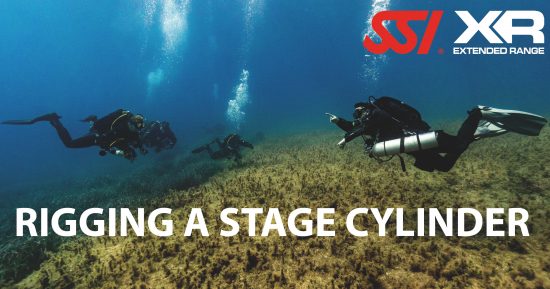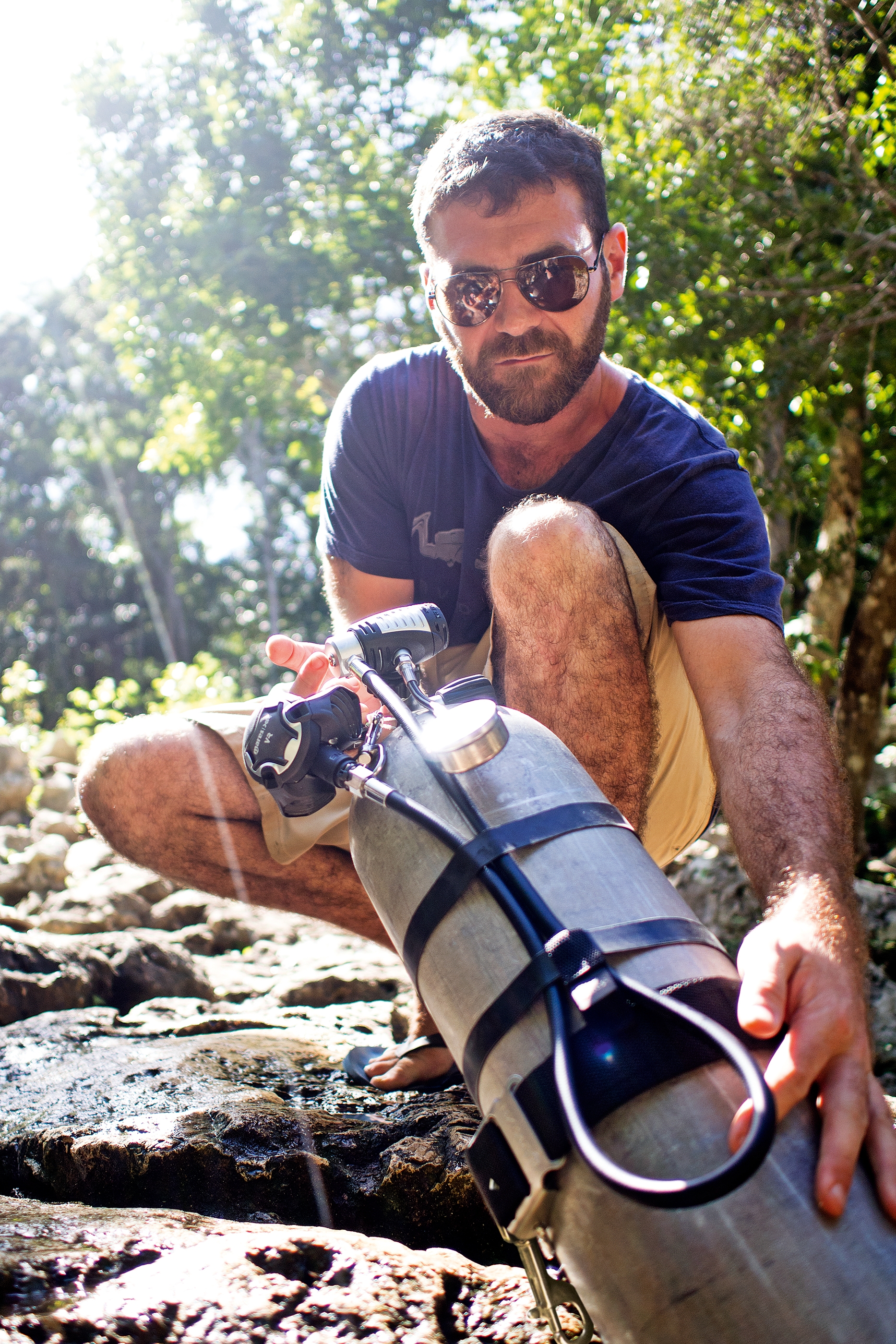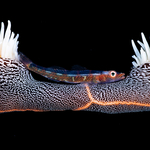
In this blog we briefly examine the components of stage cylinder rigging and how to set up the stage cylinder for open circuit diving. Firstly, let us define some terms:
- Stage cylinder rigging: The equipment used to attach and secure the stage cylinder to the buoyancy compensator or harness.
- Bolt snap: a small, brass or stainless-steel clip with a manually operated, spring-loaded slide gate.
Properly rigging the stage cylinder is an extremely important part of preparing for a decompression dive. The stage cylinder contains the decompression gas needed to safely reach the surface, so an inaccessible or lost stage cylinder is a significant concern for the diver.
Stage cylinders are typically rigged with nylon webbing, lines, or straps that loop over the cylinder neck and extend along the length of the cylinder, almost to the bottom. The lower end of rigging is secured to near the bottom of the cylinder with a stainless-steel clamp called a “jubilee band”. The rigging must be tightly secured against the cylinder without bulges or warping.
This rigging has two functions:
- It secures the upper and bottom bolt snaps, which prevents the cylinder from rotating while in the water.
- It makes it easier to handle the cylinder while in the water.
Bolt Snap Positioning
Bolt snaps are permanently secured to the top and bottom bands of the rigging. The top bolt snap is positioned at the “shoulder” of the cylinder, approximately fifty millimeters from the cylinder’s neck. The bottom bolt snap is attached to the opposite end of the rigging and is secured with the jubilee band approximately forty-five millimeters below the top bolt snap.
The jubilee band is adjusted up or down the cylinder to regulate the amount of free webbing between the clamp and the bottom bolt snap. This distance determines where the cylinder sits when it is attached to the diver’s body during the dive.
Aligning the Rigging
The webbing or line is positioned along the side of the cylinder so that it is aligned with the cylinder valve outlet. This orients the decompression regulator up toward the diver when the stage cylinder is carried alongside their body. This orientation streamlines the stage cylinder and regulator and minimizes contact with the bottom or obstructions.
Elastic hose retainers are placed around the cylinder, either before or after the point where the webbing is secured. These retainers hold the decompression regulator hose close to the stage cylinder to prevent entanglement.
Decompression Regulator Attachment
The decompression regulator is attached to the valve so that the regulator second stage is neatly streamlined. The regulator hose should not protrude out from the sides of the cylinder; it should be routed down the length of the cylinder and doubled back toward the cylinder’s neck and held in place by a clip or retainer.
The submersible pressure gauge (SPG) is frequently mounted on the decompression regulator with a fifteen-centimeter high-pressure hose. The hose can be doubled back so that the SPG can be easily read while the cylinder is attached without rotating the cylinder.
Expand your knowledge on the configuration and use of stage cylinders by joining the SSI Extended Range program. For more information head to https://www.divessi.com/en/advanced-training/extended-range


OLYMPUS DIGITAL CAMERA
The post Rigging a Stage Cylinder appeared first on Dive SSI.
Read MoreExtended Range, rigging, stage cylinderDive SSI

